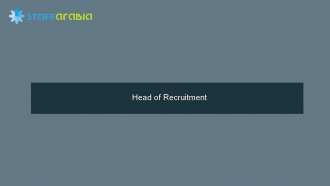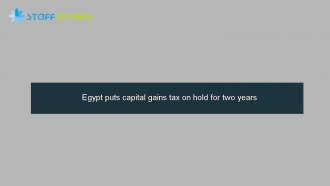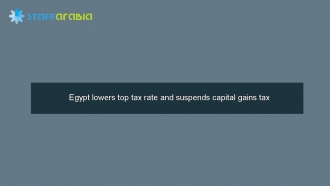
A follower, a manager, and a leader walk into a bar. They are all thirsty for a beer but the place is very crowded and it may be a while before they are served. Sure enough, many minutes pass and no one helps them. Feeling annoyed but unsure of what he can do, the follower continues to sit patiently for the waiter to arrive. Unhappy with waiting for the inefficient waiter to come by his table, the manager secures a menu from the hostess, analyzes the beer options, assesses the cost of an import vs. domestic beer, and finally signals his urgent readiness to order to the waiter across the room. Recognizing that there are three very thirsty people in her presence, the leader walks across the room to the bartender, communicates her need while extending a healthy tip, and returns to the table with three cold mugs and a frothy pitcher of delicious beer. Her absolutely delighted compatriots rejoice!
Stereotypes aside, why would each individual take a very different course of action when they all wanted the same result? The answer lies in what possibilities we allow ourselves, and our realm of possibilities are a direct function of our belief systems. More succinctly put — our values, beliefs, and personal stories drive our behavior. The follower’s personal story was one of limited possibilities. There were social norms that he was supposed to follow, and wanting to be a good follower, he did what he thought he was supposed to do. The manager’s personal story is one of control. Valuing efficiency and optimization he took action that would expedite the ordering process. The leader’s personal story is one of service. Ignoring social norms and irrational restraints, the leader assessed the needs of the group, adapted to the environment, and made things happen through purposeful action. Why was the leader most effective? Because she was not confined by a story that limited her potential.
In my executive coaching work, I have come across several common beliefs that consistently show up and can limit a leader’s potential. Note that these stories do not discriminate, and even the most successful leaders can sometimes fall victim to them periodically. My hope is that by sharing these with you, it may bring awareness to your own personal stories and how they impact your leadership potential. As you read these first four, check-in with yourself….what is it that you believe?
1. Leaders are supposed to have the answers – Are we not? We get promoted to positions of authority primarily based on our experience and competence. Followers value our ability to clearly articulate vision and direction. Thus, we are supposed to be the smartest person in the room. If you don’t know, then you can’t possibly be leading effectively. False! Not knowing is a prerequisite for curiosity, which enables both a sense of humility and our ability to innovate. Leaders who value curiosity over knowledge tend to facilitate the exchange of diverse perspectives and foster healthy debate within teams. Yet, leaders who can thrive in such ambiguity are a rare breed. For more on how you can overcome this common belief and instead turn uncertainty into opportunity, I recommend Steven D’Souza and Diana Renner’s book “Not Knowing.”
2. Good leaders never show signs of weakness – Of course they don’t! As soon as you show weakness, the wolves will attack your soft underbelly. Great leaders project strength and have the will to overcome adversity. Well, this is only part of the story! Great leaders also know how to demonstrate vulnerability to increase their approachability and authenticity with followers. In doing so, they connect with followers in a truly meaningful way and inspire far more engagement than the stoic warrior-leader ever could. Once more, leaders must know how to ask for help. No leader can succeed alone and if you believe that asking for help is a sign of weakness, you have already significantly limited your potential.
3. My team can’t operate without me – This one is certainly the truth right? The place falls apart when you go on vacation. Plus, we all know that things just won’t get done right unless you are personally involved. Untrue! If anything, this is the manager’s story not a leader’s story. Leaders seek to relinquish control and recognize that the true mark of leadership is when they can walk away from a situation and trust that things will be executed in their absence. Why? Becauseleaders create more leaders. In the U.S. military, leaders are required to train multiple people to do their job should they be lost in battle. It is a culture that inspires constant coaching and mentoring. Your leadership ability then becomes more about the quality of your team than your personal skill. I wish I saw more of this in our modern corporate environments. Instead, I often come across leaders who believe that training the team too well makes them expendable. Do you need to be the hero? Or do you relish in creating heroes? Leaders value the latter.
4. It’s my job as a leader to enforce the rules – This is a no brainer. Rules exist for a reason and leaders have a responsibility to ensure that team members work within the social contracts we agree upon. If they don’t, the result is chaos and disorder. No organization can survive in such conditions. Not exactly! A leader must manage two operating systems: one that limits risk and one that encourages experimentation and change. Leaders fully own their responsibility to provide stability and act ethically. Yet, they also push boundaries and realize that sometimes rules exist to stifle innovation, preserve the status quo, and bring outliers right back to average. The mindset of a leader should always be one that abhors mediocrity. What’s more important to you, meeting other’s expectations or redefining the expectations altogether?
If any of these stories resonate with you personally, it may be time to release a belief or work towards changing a value which is no longer serving you as a leader. In part two of this article, I’ll examine four more beliefs that can limit your potential as a leader, including the most pervasive belief that holds leaders back. I invite you to hit the "follow" button at the top of the page so I can share the article’s continuation with you as well as continue to write and share with you on a variety of topics.
















